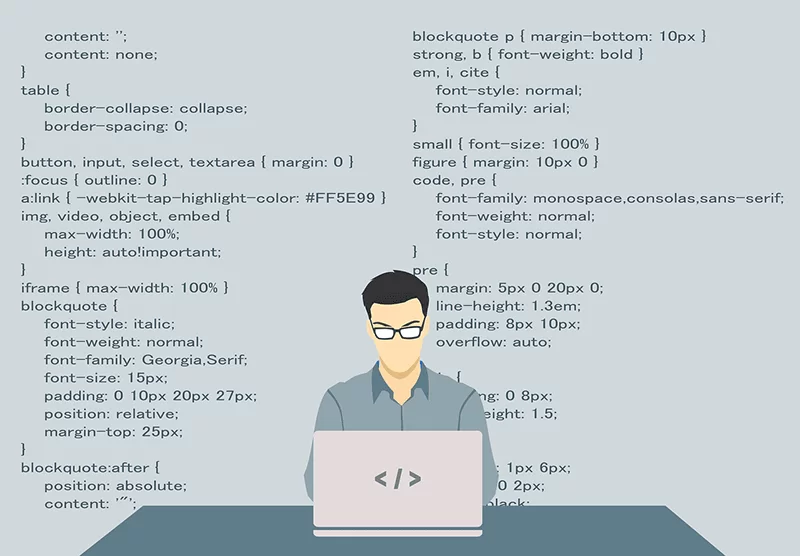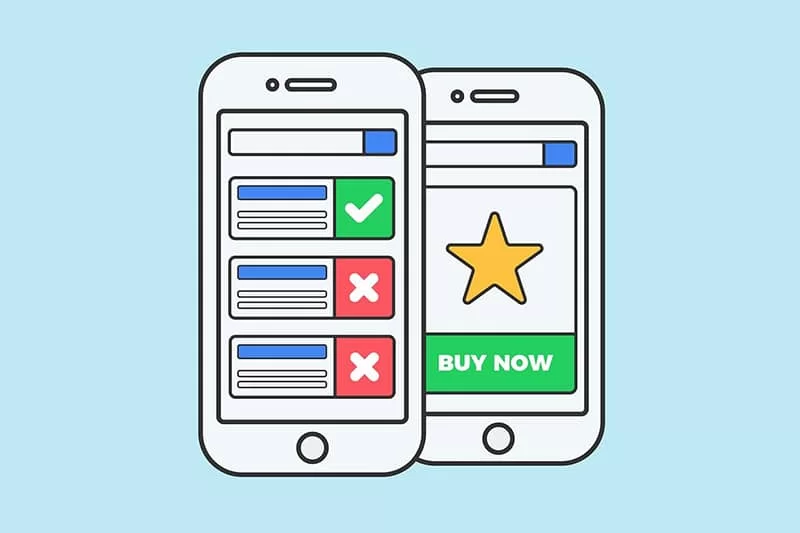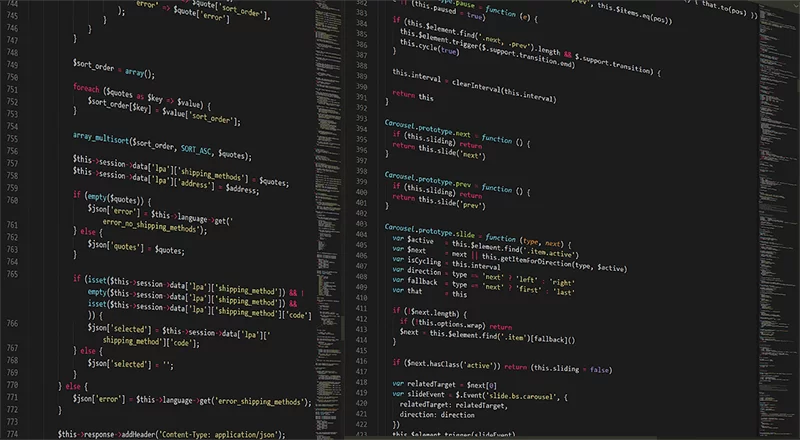10 Tips To Improve Website Load Times

Table of Contents
How To Improve Website Load Times
It seems many users have become increasingly impatient when it comes to website load times. With the abundance of information available on the internet, consumers are quick to move on if a website takes too long to load. Studies have shown that even a one-second delay can result in a 7% decrease in conversions and an 11% decrease in page views. As such, improving website load times should be a top priority for any business looking to succeed online.
Slow website load times not only affect user experience but also have a significant impact on search engine rankings. Search engines like Google take into account the speed at which a website loads when determining its ranking in search results. This means that a slow website can result in lower visibility and traffic, ultimately leading to decreased sales and revenue.
There are several methods you can use to improve your website’s load times, including optimising images and reducing the number of HTTP requests. In this article, we will explore how to make your website load speed much faster… Let’s go!

1) Optimise Image Sizes and Formats
In today’s fast-paced digital world, where instant gratification is the norm, having a website or application that loads quickly has become more important than ever.
Users expect websites to load within seconds and any delay can result in them moving on to another site. This makes it crucial for businesses to optimise their website’s loading speed, and one effective way to achieve this is by reducing image file sizes and choosing the right format.
Why Reduce Image File Sizes?
Large images can significantly slow down a website’s loading speed. This is because when an image is uploaded onto a website, it takes up bandwidth and increases the time it takes for the page to load. The larger the image, the longer it takes to load. This can result in a poor user experience and can even lead to increased bounce rates.
However, reducing the file size of images does not mean compromising on quality. With advancements in technology, there are now various tools and techniques available that allow you to reduce file sizes without visibly affecting the quality of the image.
Choosing the Right Image Format
There are various image formats available, such as JPEG, PNG, and WebP. Each of these formats has its own advantages and is suitable for different types of images.
- JPEG (Joint Photographic Experts Group):
This format is most commonly used for photographs or complex images. It uses a lossy compression technique to reduce file sizes while maintaining good quality. All web browsers support JPEG images and can be used for both photographs and graphics. - PNG (Portable Network Graphics):
This format is best suited for images with transparent backgrounds or those that require crisp, clear lines such as logos or icons. It uses a lossless compression technique which preserves the quality of the image but results in larger file sizes compared to JPEG. All web browsers also support PNG images. - WebP:
This is a relatively new image format developed by Google. It uses both lossy and lossless compression techniques to achieve significantly smaller file sizes compared to JPEG or PNG, while still maintaining good quality. However, not all web browsers support WebP images yet, so it’s important to check browser compatibility before using this format.
Choosing the Right Image Format
There are various ways to reduce image file sizes, such as using image compression tools or optimising images for the web. Here are some examples:
- Image Compression Tools:
There are many online and offline tools available that allow you to compress your images without losing quality. Some popular options include TinyPNG, JPEGmini, and Squoosh. - Image Optimisation for the Web:
Image optimisation involves reducing the file size of an image by removing unnecessary data without affecting its overall visual quality. This can be done using popular photo editing software such as Adobe Photoshop or GIMP.
Reducing image file sizes and choosing the right format is essential for a faster-loading website and a better user experience. By utilising the right tools and techniques, businesses can achieve reduced file sizes without compromising on image quality.
This not only improves website performance but also helps in retaining users and ultimately boosting conversion rates. So, next time you upload an image onto your website or application, remember to consider its file size and format for optimal loading speed.

2) Leverage Browser Caching
Browser caching is a crucial component in improving website performance. It allows the browser to store previously accessed resources locally, reducing the need for repeated downloads from the web server. This results in faster loading times and better user experience.
When a user visits a website, their browser stores images, scripts, stylesheets, and other static content in a cache folder on their device. The next time the user visits the same website, instead of requesting these resources from the server again, the browser retrieves them from the local cache. This greatly reduces page load times and can significantly improve website performance.
To set up browser caching, developers can use HTTP headers to specify how long specific resources should be cached for. For example, the “Cache-Control” header can be used to set a time period for how long a resource should be cached. This can range from hours to even months, depending on the type of content.
Another commonly used method is using ETags (Entity Tags), which are unique identifiers assigned to each resource by the server. When a browser makes a request for a certain resource, it sends the ETag along with the request. The server then compares this ETag with its own and responds with a “304 Not Modified” code if they match, indicating that the resource has not been modified and can be retrieved from the cache.
Browser caching can also be set up for specific resources using plugins or extensions, such as W3 Total Cache, WP Rocket and WP Fastest Cache for WordPress sites. These tools provide more customisation options and can greatly enhance website performance.

3) Minimise HTTP Requests
HTTP requests are a crucial part of website performance. Every time a user visits your website, their browser makes multiple HTTP requests to fetch the HTML, CSS, and JavaScript files needed to display the page. The more HTTP requests your website has to make, the longer it takes for the page to load.
In a fast-paced society, users expect websites to load quickly. In fact, studies have shown that a website’s load time directly impacts user engagement and conversion rates. This means that if your website takes too long to load, users are more likely to leave and not return.
To avoid this scenario and provide an optimal user experience, websites need to minimise their HTTP requests. This can be achieved by reducing the number of files needed to load a page, combining files where possible, and using caching techniques.
Reducing the number of files needed to load a page can be done by eliminating unnecessary images, scripts, and stylesheets. This not only reduces the amount of data that needs to be transferred but also decreases the server’s workload, resulting in faster response times.
CSS Sprite Sheets
A CSS sprite sheet is a single image file that contains multiple images within it. Instead of loading each individual image separately, a sprite sheet can be used to load them all at once. This reduces the number of server requests needed to display images on your website, thereby reducing loading time.
Combining Files
Another technique to reduce the number of server requests is by combining multiple files into one. This is especially useful for CSS and JavaScript files, as they are typically made up of multiple smaller files. By combining them into one larger file, you can reduce the number of server requests needed to load your website.
Minimising Scripts
Minimising scripts can also help in reducing the number of server requests on your website. This involves removing unnecessary whitespace and comments from your CSS and JavaScript files before deploying them to your server. This results in smaller file sizes, which can significantly reduce the loading time of your website.
By implementing these techniques, you not only improve your website’s performance and loading speed but also make it more efficient. This is especially crucial in today’s fast-paced digital world, where users have little patience for slow-loading websites. By reducing the number of server requests, you provide a better user experience and increase the chances of retaining visitors on your site.

4) Implement a Content Delivery Network (CDN)
A Content Delivery Network (CDN) is a geographically distributed network of servers that work together to provide quick delivery of digital content to users. This technology has become increasingly popular in recent years due to the rise of online content consumption and the need for faster, more efficient delivery.
One major benefit of using a CDN is improved website performance. By utilising servers located closer to the end user, content can be delivered faster and with less latency. This results in a better user experience and can also improve search engine rankings as page load speed is a key factor in SEO.
Using a CDN can help reduce server load and bandwidth usage on the origin server. As the content is distributed across multiple servers, it reduces the strain on any single server and can help prevent downtime or crashes due to high traffic. This makes a CDN particularly beneficial for websites that experience high levels of traffic.
Another advantage of using a CDN is improved reliability and availability. By having multiple copies of content stored across different servers, if one server goes down, the content can still be accessed from another server. This is especially useful for websites with global reach, as it ensures content is available to users in all regions, even if there are network or server issues in one location.
There are many CDN options available for website owners to choose from. Some popular options include Cloudflare, Akamai, Fastly, Bunny, and Amazon CloudFront. Each of these CDNs offers different pricing plans and features, so it’s important to research and choose one that best suits the needs of your website.

5) Optimise CSS and JavaScript Files
CSS and JavaScript files are essential components of any website, as they provide the necessary instructions for styling and interactivity. However, these files can also significantly slow down the load times of a webpage, which can lead to a poor user experience.
Minimising CSS and JavaScript Files
The first step in optimising a website’s load time is to minimise the size of CSS and JavaScript files. This involves removing unnecessary whitespace, comments, and code that is not used on the webpage. By doing so, we can significantly reduce the file size without affecting its functionality.
There are several tools available to help with minimising CSS and JavaScript files. For example, yui-compressor and cssnano are popular minification tools that remove unnecessary characters from these files while preserving their structure and functionality.
Compressing CSS and JavaScript Files
Another effective strategy for reducing load times is to compress CSS and JavaScript files. Compression involves removing redundant data and characters from the files, making them smaller in size.
This process can be done manually or using tools like UglifyJS and csso. Additionally, Gzip compression can be enabled on the server-side to further reduce file sizes during transmission.
Resources for Compressing CSS and JavaScript Files
There are plenty of online resources available to help with compressing CSS and JavaScript files. For example, minifier.org is a free online tool that allows us to quickly compress these files without the need for any additional software installation.
Tools like Google’s PageSpeed Insights can provide insights into how well a website is optimised and suggest ways to compress CSS and JavaScript files further.

6) Enable Compression
Enabling website compression is a crucial step in optimizing your website’s performance. By compressing your CSS, HTML, and JavaScript files using GZIP or similar compression methods, you can greatly reduce their file size and improve loading speed.
So how do you enable website compression?
The process may vary depending on the hosting platform you use, but generally, it involves accessing your server’s configuration files and enabling compression through code. For example, if you use Apache as your web server, you can enable GZIP compression by adding the following lines of code to your .htaccess file:
<IfModule mod_deflate.c>
# Compress HTML, CSS, JavaScript, TXT, XML and fonts
AddOutputFilterByType DEFLATE application/javascript
AddOutputFilterByType DEFLATE application/rss+xml
AddOutputFilterByType DEFLATE application/vnd.ms-fontobject
AddOutputFilterByType DEFLATE application/x-font
AddOutputFilterByType DEFLATE application/x-font-opentype
AddOutputFilterByType DEFLATE application/x-font-otf
AddOutputFilterByType DEFLATE application/x-font-truetype
AddOutputFilterByType DEFLATE application/x-font-ttf
AddOutputFilterByType DEFLATE application/x-javascript
AddOutputFilterByType DEFLATE application/xhtml+xml
AddOutputFilterByType DEFLATE font/opentype
AddOutputFilterByType DEFLATE font/otf
AddOutputFilterByType DEFLATE font/ttf
AddOutputFilterByType DEFLATE image/svg+xml
AddOutputFilterByType DEFLATE image/x-icon
# Compress CSS, HTML and JavaScript files
<FilesMatch "\.(css|html?|js)$">
SetOutputFilter DEFLATE
</FilesMatch>
</IfModule>
Constructive Visual and the author of this post, Peter Lowen provide the code on this page as-is. Please test this code on a test/staging site before releasing on your production site. Ensure that you reach out to your web hosting service provider for advise on making changes to your .htaccess file and ensure that this code will function correctly on your server before executing. You will need access to your web server to execute this code. Be sure to run a security/firewall/antivirus scan on your site to ensure that this code is safe to execute. You can use this code at your own risk!
Please read this Disclaimer carefully, as we reserve the right to modify the code anytime without notice to you.
It is important to note that not all file types can be compressed and some may already be compressed by default. For example, JPEG and PNG image files are already compressed, so compressing them further will not result in any significant improvement in loading speed.
Another thing to keep in mind is that while compression does decrease the file size, it can also increase the CPU usage on your server. This is because the compressed files need to be decompressed before they can be used by the browser, which requires some processing power. Therefore, it is important to find a balance between file size reduction and server load.
Despite the potential impact on server load, the benefits of website compression far outweigh any potential drawbacks. By reducing file sizes and improving loading speed, you not only enhance user experience but also potentially improve your search engine ranking as page speed is a known factor in SEO.

7) Prioritise Above-the-Fold Content (Lazy Loading)
Lazy loading is a technique used in website development to improve page load times. It is a method for deferring the loading of non-critical resources until they are needed, which results in a faster initial view of the website. This means that only essential elements such as text and images above the fold will be loaded initially, while other elements such as images and videos further down the page will only be loaded when a user scrolls down to that section.
The impact of lazy loading on website speed is significant. By deferring the loading of non-essential resources, the initial view of the website can load much faster, resulting in a better user experience. This is especially important for websites with large amounts of media, as lazy loading can significantly reduce the time it takes for a page to fully load.
One of the main benefits of lazy loading is that it reduces the number of HTTP requests made when a user accesses a website. This is because non-critical resources are not loaded immediately, which leads to fewer requests being made to the server. With fewer requests, the website can respond much faster, resulting in a quicker initial view for the user.
There are several programs, plugins, and software that can be used to enable lazy loading on a website. One popular option is the Lazy Load plugin for WordPress, which automatically enables lazy loading for all images on a website. Other options include jQuery LazyLoad, Unveil.js, and LazySizes. These tools make it easy for website developers to implement lazy loading without the need for extensive coding knowledge.

8) Reduce Server Response Time
One of the key factors that contribute to a successful website or online business is its server response time. The faster your server responds to requests from users, the better experience they will have and the more likely they are to stay on your site longer and engage with your content.
But what exactly is server response time? Server response time refers to how long it takes for your web server to respond to a request from a user’s browser. This includes the time it takes for the server to process and deliver the requested information back to the user.
To reduce server response time, there are a few key steps you can take. It is crucial to choose the right hosting provider for your website. A reliable and efficient hosting provider will ensure that your website has a fast and stable server response time.
Optimising your databases can also have a significant impact on reducing server response time. This involves removing any unnecessary or outdated data from your databases and ensuring they are properly indexed for faster retrieval of information.
Another way to improve server response time is by implementing caching strategies. Caching stores frequently requested data in memory so that it can be delivered quickly without having to retrieve it from the server every time. This can significantly reduce the load on your server and improve response time for users.
It is also important to regularly monitor and test your website’s server response time. There are various tools available that can help you track and analyse this data, allowing you to identify any issues and make necessary improvements.

9) Minimise the Use of Web Fonts
Web fonts play a significant role in the overall design and aesthetics of a website. However, using too many web fonts can have a negative impact on your site’s performance and user experience. It is essential to use web fonts efficiently to minimise their load times.
One way to reduce the use of web fonts is by limiting the number of font styles used on your website. Using multiple font styles can increase the number of HTTP requests, which in turn, can slow down your site’s load times. Instead, stick to two or three font styles that complement each other and use them consistently throughout your website.
Another way to optimise web fonts is by using modern font formats such as WOFF2 and WOFF instead of older formats like TTF and OTF. These newer formats are specifically designed for web use and have smaller file sizes, leading to faster load times.
Consider using a font loading strategy that prioritises the most critical fonts on your website while delaying the loading of non-essential fonts. This approach can significantly improve your site’s performance by ensuring that essential content is displayed quickly.
It is also crucial to regularly audit and remove any unused or unnecessary web fonts from your website. Having a large number of fonts can increase the size of your CSS files, which can negatively impact load times.

10) Regularly Monitor Website Speed
Regularly monitoring website speed is an essential part of maintaining a successful online presence. It allows you to identify any potential issues that may be affecting your site’s performance and take action to improve it.
Continuous monitoring of website speed also helps to benchmark your site against others in your industry, giving you valuable insights into how you can improve and stay ahead of the competition. This constant evaluation and refinement is crucial in today’s fast-paced digital landscape, where even a minor difference in website speed can have a significant impact on user experience and conversion rates.
To regularly monitor your website speed, there are various tools available that provide detailed reports and analysis. For example, Google’s PageSpeed Insights not only gives you an overall score for your site’s performance but also highlights specific areas that need improvement, such as image optimisation or server response time. Other popular website speed monitoring sites include GTmetrix, Pingdom, and WebPageTest, each offering unique features to help you track and improve your site’s speed.
By regularly monitoring your website speed, you can ensure that your site is always performing at its best and delivering a seamless experience for your visitors. This not only improves user satisfaction but also has a direct impact on your search engine rankings, as search engines like Google consider website speed as an important factor in their algorithm. So don’t overlook the importance of continuous monitoring and benchmarking when it comes to maintaining a successful online presence.

Quickly Improve Website Load Times On Your Site
As a website owner, you know the importance of having a fast-loading website. It not only improves user experience but also helps with SEO and conversion rates. In today’s digital age, speed is everything. Users expect websites to load within seconds, and anything longer can lead to frustration and abandonment.
In this article, we have discussed various ways to quickly improve your website’s load times. From optimising images and using a content delivery network to minifying code and leveraging browser caching, these techniques can significantly reduce the loading time of your website.
But remember, website speed is an ongoing process. As technology advances, so do user expectations for faster performance. It’s essential to continually monitor and improve your website’s load times to stay ahead of the game.
Leave A Comment
Loved this article? Please consider sharing it with your friends…

Peter Lowen
Senior Web Developer | CEO
Peter Lowen is the founder and CEO of Constructive Visual, a website design and hosting company. He has been creating websites since 2005 and writes content on business, marketing, web design, sales training, web hosting and WordPress related topics.
Enjoyed Our Article? We've found a few more for you!
Responsive Web Design – Best Practices for a Responsive Website
In an era where digital presence is imperative, having a responsive website is no longer optional—it’s essential. At Constructive Visual,...
Strengthen your Perth & Wheatbelt business’s online presence with tailored website design and hosting, raising visibility, enhancing user experience, and...
Branding is essential for any business, big or small. It helps to create a unique identity and sets you apart...
Creating a Strong Online Foundation – Small Business Web Design in Perth
In today’s digital age, having a well-designed website is crucial for small businesses in Perth. A professionally designed website can...










